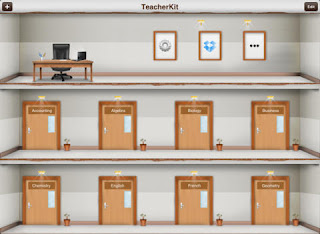More fun with fruit manipulatives!
Since today is Monday, it is once again time for Lindsay Jervis' manipulatives linky party!
Last week, I discussed fruit manipulatives. I've really loved using these, so this week, I wanted to mention a few more uses for them!
In my last blog entry about fruit manipulatives, I had students use the manipulatives to practice ti-tika. After putting together the activity, I realized I could take away some of the fruit to practice easier rhythms. For example, if I take the raspberries out of the bags, then students could use them to practice tika-tika, by having a watermelon in every pattern. Take out the watermelons and raspberries, and students in first grade can practice ta and ti-ti! If students are practicing tika-ti, you could add artificial tangerines or clementines in the bags! Click on the picture below to see fake tangerines on Amazon.
When using these fruit manipulatives with other rhythms, you could use them as a standalone writing activity, or connect them to other songs about fruit, such as "Apple Tree" and "Apples Peaches Pumpkin Pie." Another fun song that you could use for creating in 3-beat meter is "Oranges and Lemons," notated below.
To play the game, two students make an arch that the other students pass through as singing; one is secretly assigned as "orange" by the teacher with the other assigned as "lemon." On "Martin's," the students marking the arch drop their arms and catch a student. That student caught whispers "orange" or "lemon" to the teacher, and the teacher has him/her stand behind that student in the arch. The game continues until most or all students have been assigned to one side or the other, and then a tug of war ensues! The song is based on an English nursery rhyme (which you can read about here) and apparently the last verse is about chopping off someone's head. I think I may be leaving that verse out! :)
To use the manipulatives with the song, you could have students create a 6-beat pattern and say the fruit names, then rhythm names, but make sure the first beat of each three sounds strong, to help practice 3/4! You could use this as a B section, just as we did with "Red are strawberries" in the last blog entry.
This past weekend, I visited Fargo, ND and presented an assessment workshop for NPKC; the workshop was actually in Moorhead, MN, very close to Fargo. It was a fun time! After I presented about learning centers, I split the participants into four groups and had them try out the centers. At one of the centers, I combined fruit manipulatives with rhythm manipulatives, so that after they created the pattern, they had to figure out their rhythm and write it with cards. Here's an example below:
This is a great way to get students to connect the two types of manipulatives! I will write more about the rhythm manipulatives in another blog entry.
Thanks to Lindsay for the linky party, and have a great week!





.JPG)




























MENU SOCIAL LINKS